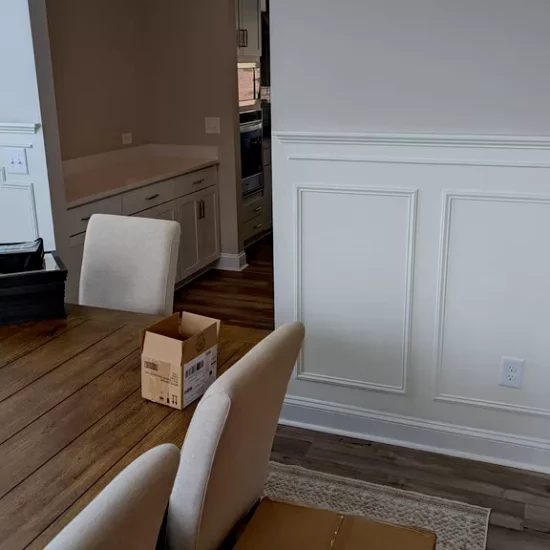Family Friendly Remodeling 101
Essential Considerations When Starting a Home Remodel with Children
Embarking on a home remodel can be an exciting but challenging endeavor, especially when you have small children in the house. While the prospect of a beautifully updated home is appealing, the process itself can be disruptive and stressful for both parents and kids. To help you navigate this journey smoothly, here are some essential considerations to keep in mind when starting a home remodel with little ones around.
1. Plan for Safety First
Safety is the top priority when remodeling with small children in the home. Construction zones can be hazardous, with tools, debris, and exposed wiring posing potential risks. To minimize dangers:
- Create a Safe Zone: Designate specific areas in your home as off-limits during construction. Use baby gates or temporary barriers to keep children away from active work sites.
- Secure Dangerous Items: Ensure tools, sharp objects, and construction materials are securely stored out of reach when not in use. Keep an eye on nails, screws, and other small items that could be choking hazards.
- Supervise Constantly: Even with precautions in place, constant supervision is crucial. Make sure someone is always watching the kids when they’re near construction areas.
2. Minimize Disruption to Daily Routines
Children thrive on routine, and remodeling can throw their daily schedules into disarray. To maintain a sense of normalcy:
- Set Up a Temporary Living Space: Consider setting up a part of your home as a “construction-free” zone where your family can carry on with daily activities. This space should include essentials like a place to eat, play, and sleep comfortably.
- Maintain Regular Schedules: Try to keep regular meal times, naps, and bedtimes consistent, even if your surroundings are chaotic. Familiar routines can help children feel more secure during the upheaval.
- Communicate Changes: Explain to your children what’s happening in simple terms. Let them know that the construction is temporary and reassure them that their daily lives will return to normal soon.
3. Consider the Timing of the Remodel
Timing is crucial when planning a remodel with small children in mind. Ideally, schedule work during a period when it will cause the least disruption:
- Choose the Right Season: Depending on where you live, certain seasons may be more conducive to remodeling. For instance, spring and summer might be better for outdoor work, allowing you to keep windows open and spend more time outside.
- Plan Around Milestones: Avoid remodeling during significant milestones like the start of a new school year, the arrival of a new sibling, or other major life events that might already be stressful for your children.
4. Involve Your Children in the Process
Involving your children in the remodeling process can make them feel more at ease with the changes happening around them:
- Let Them Help with Small Tasks: Depending on their age, give your kids small, safe tasks to help with, like choosing paint colors for their rooms or organizing tools. This involvement can make them feel like part of the project and less anxious about the changes.
- Show Them the Progress: Regularly walk them through the work in progress, explaining what’s happening. Seeing the transformation can be exciting and help them understand the bigger picture.
5. Prepare for Noise and Dust
Remodeling inevitably comes with noise, dust, and mess—none of which are particularly child-friendly:
- Plan for Nap Time: Coordinate with your contractor to schedule the loudest work around your children’s nap times or when they’re out of the house.
- Control Dust and Debris: Discuss dust control measures with your contractor. They can use plastic sheeting to contain dust to specific areas, use air scrubbers, or suggest other strategies to minimize air quality issues.
- Have an Air Purifier Handy: Investing in a good air purifier can help reduce dust and allergens during the remodel, making the environment safer for your little ones.
6. Be Prepared for the Unexpected
Remodeling projects often come with surprises—whether it’s discovering a structural issue or a delay in materials. With children in the mix, flexibility is key:
- Have a Contingency Plan: Be prepared for delays and have a plan in place if things don’t go as expected. This might include temporary housing arrangements or adjusting your timeline.
- Keep Essentials Accessible: Ensure that essential items like clothes, toys, and baby supplies are easily accessible, even if parts of your home are off-limits.
7. Consider Temporary Relocation
Depending on the scale of the remodel and the age of your children, you might consider temporarily relocating:
- Evaluate the Scope: For extensive renovations, especially those involving multiple rooms or major structural changes, it might be safer and less stressful to stay with family, friends, or in short-term rental housing until the work is complete.
- Weigh the Costs and Benefits: While relocating may add to your budget, the benefits of reducing stress and ensuring your children’s safety could outweigh the costs.
8. Work with a Family-Friendly Contractor
Choosing the right contractor is critical, especially when working around children:
- Look for Experience with Families: Opt for a contractor who has experience working in homes with children. They’ll be more aware of potential issues and proactive about addressing them.
- Discuss Your Concerns: Communicate your concerns and priorities clearly with your contractor. A good contractor will work with you to create a plan that accommodates your family’s needs.
Conclusion
Starting a home remodel with small children requires careful planning and consideration, but with the right strategies in place, it’s entirely possible to navigate the process smoothly. By prioritizing safety, maintaining routines, and involving your children, you can minimize stress and even make the experience a positive one for the entire family. Remember, the end result—a home that better suits your family’s needs—will be worth the effort!











No Comments
Sorry, the comment form is closed at this time.